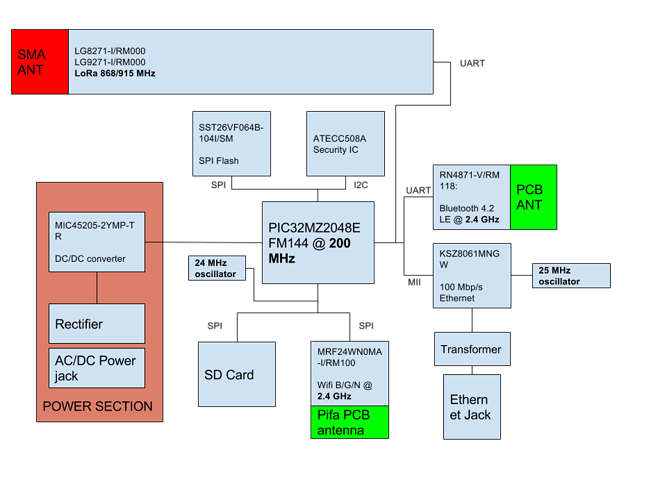I don’t see it
Thx. But why do they advertise it?
See also this Kickstarter update. It is indeed still on the TTN Kickstarter project description page, but I guess that can not be changed anymore after the project has been funded?. I think it is not advertised on the TTN shop
Of course you can.
The guys should adopt a more clear speech, saying, what exactly IS, not only tell around. That’s my opinion.
Regarding, GPS, you have made a mistake. Due to uncertainty of clock bias between satellite and receiver, you at least require 4 satellite being tracked to produce code phase/pseudorange measurements.
As for LoRa, the end-device first is not expected to have good quality ox(such as better than 5ppm TCXO,) the TOA method cannot resolve the common clock bias term. That said TDOA can be used…
Can you elaborate a bit how network server gets the TDOA pairs? I only know the time stamp from rxpkt.{time, tmst}
Thanks marmite.
For example in one area covered by 3 GWs, they all listening, if that means at same time at least 3 nodes can get the right of channel to send the message to different GW, and thus the message from one node can’t be received by 3 GWs and then the backend can’t make the positioning due to lack of info?
In TDOA mode, the GW need GPS and good quality OX, all the GWs tracing the sat. And based on the 1PPS to write the time stamp. The assumption here is we think the Basic clock in GWs is synchronized cause they all got from sat.
The nodes function is just send message out.
In LoRaWAN, any node can send a message at any time. This transmission will occur on a randomly chosen channel, with the appropriate SF.
Multiple GW can receive this message (virtually without limit). If the GW have a precise position and clock - i.e. GPS based - the backend will precisely know when each of the GW have received the message. Based on these data, the backend will be able to compute the position of the node to the precision limit.
If at the very same time another node send on the same channel and ‘block’ the message from the initial node to be heard from one or more gateway, it will make difficult the computation.
You need a minimum of 3 gateways to receive the same message to have some data to compute a location.
If the message is transmitted with a too low signal strength, it will limit the number of GW capable of receiving the data, preventing the location computation but still allowing the message to be received by the NW.
so it probably could only work (more or less) in cities because there you have the most chance of having at least 3 gateways in reach of that node … but then also you have more reflection from buildings which corrupts the measurement.
Well here is a small (?) problem. Especially in cities you have a lot of multipath fading that will disturb the time of reception heavily. As a result of that the probability of location will decrease.
what I said before 
Currently from the LoRaWAN document I have, the precision of time stamp in GW is only about 1ms, which means TDOA based positioning accuracy cannot be better than hundreds of metres.
Would following approach work to improve localisation accuracy of TdoA
- Put a reference node (for which you known the exact loacation) close to your unknown mobile location node
- Let TdoA calculate the location of your reference node using TdoA.
3)Calculate the error vector (real vs measured location)
4)Subtract the error vector from you aproximated mobile location node to get the real location of the mobile node more accurately
Thoughts ?
so its not an unknown location , you would need many many reference nodes imho.
if you need accurate position go gps (a good one)
It seems that the docs on LoRa localisation aren’t publicly available.
LoRaLoc modules provide fine time stamp with 1 nanosec precision (and 50-100 ns, accuracy ![]() ). Also, timestamps are encrypted, so you have to pay for decryption keys.
). Also, timestamps are encrypted, so you have to pay for decryption keys.
First, you have to have good coverage. It seems that most of gateways installed by KPN don’t support localisation.
At all, from practical point of view, LoRa-based localisation doesn’t work well enough for the most cases.50 meters accuracy in ideal conditions like tens of gateways installed on oil platforms in Nothern Sea (almost flat surface, yea…), and you have to send some hundreds messages first…
That would assume all nodes in that area have the same error due to reflection/multipath. I doubt that’s a reasonable assumption.
I have the same questions with you, have you solved these problems now?
That’s amazing. But it’s my ignorance, I have difficulties in acquiring the time of signal arrival. How to use a GPS to achieve such accuracy? Could you provide some details? Many thanks!
Your feedback is very welcome!
